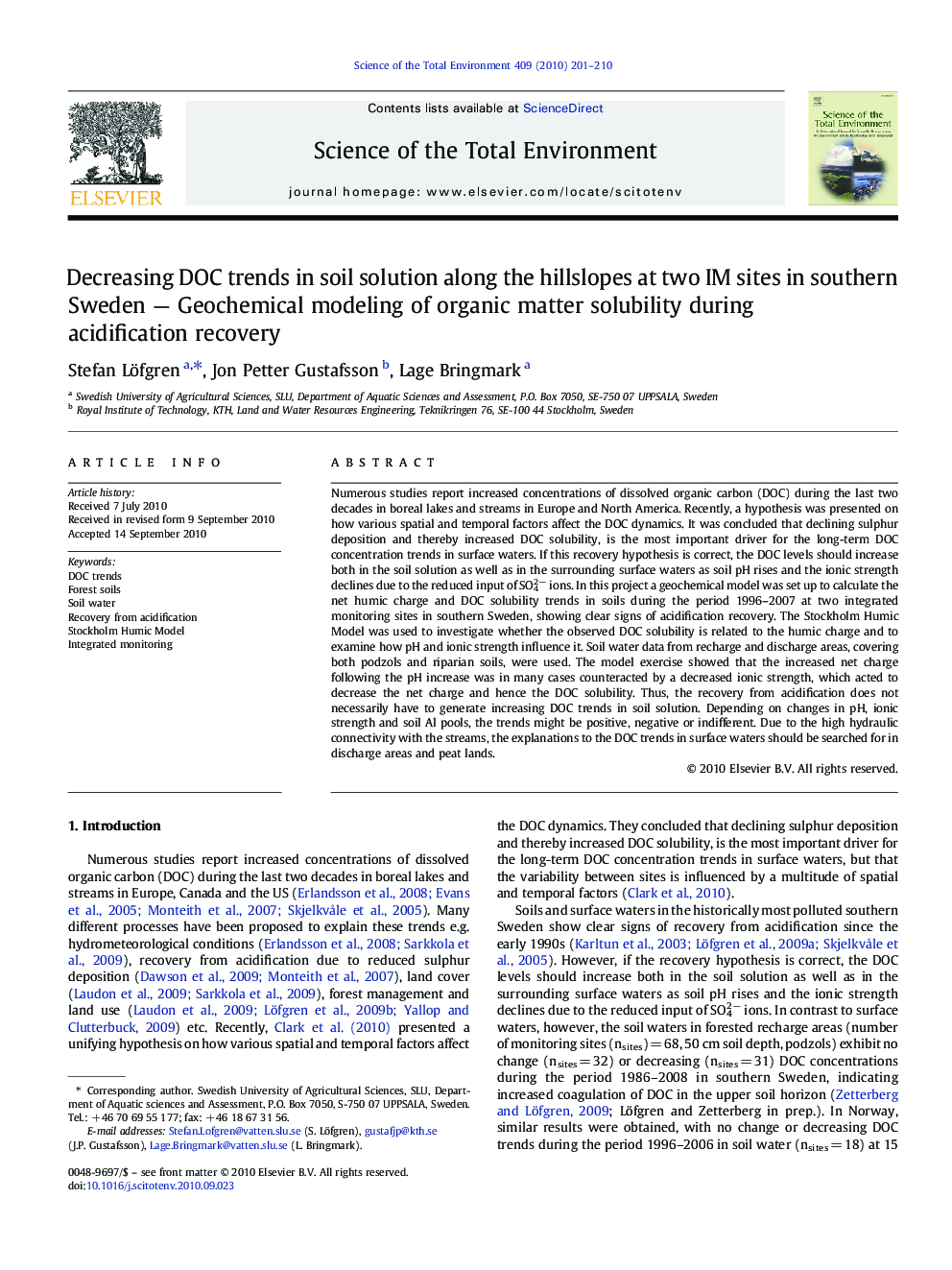| Article ID | Journal | Published Year | Pages | File Type |
|---|---|---|---|---|
| 4430307 | Science of The Total Environment | 2010 | 10 Pages |
Numerous studies report increased concentrations of dissolved organic carbon (DOC) during the last two decades in boreal lakes and streams in Europe and North America. Recently, a hypothesis was presented on how various spatial and temporal factors affect the DOC dynamics. It was concluded that declining sulphur deposition and thereby increased DOC solubility, is the most important driver for the long-term DOC concentration trends in surface waters. If this recovery hypothesis is correct, the DOC levels should increase both in the soil solution as well as in the surrounding surface waters as soil pH rises and the ionic strength declines due to the reduced input of SO42− ions. In this project a geochemical model was set up to calculate the net humic charge and DOC solubility trends in soils during the period 1996–2007 at two integrated monitoring sites in southern Sweden, showing clear signs of acidification recovery. The Stockholm Humic Model was used to investigate whether the observed DOC solubility is related to the humic charge and to examine how pH and ionic strength influence it. Soil water data from recharge and discharge areas, covering both podzols and riparian soils, were used. The model exercise showed that the increased net charge following the pH increase was in many cases counteracted by a decreased ionic strength, which acted to decrease the net charge and hence the DOC solubility. Thus, the recovery from acidification does not necessarily have to generate increasing DOC trends in soil solution. Depending on changes in pH, ionic strength and soil Al pools, the trends might be positive, negative or indifferent. Due to the high hydraulic connectivity with the streams, the explanations to the DOC trends in surface waters should be searched for in discharge areas and peat lands.
